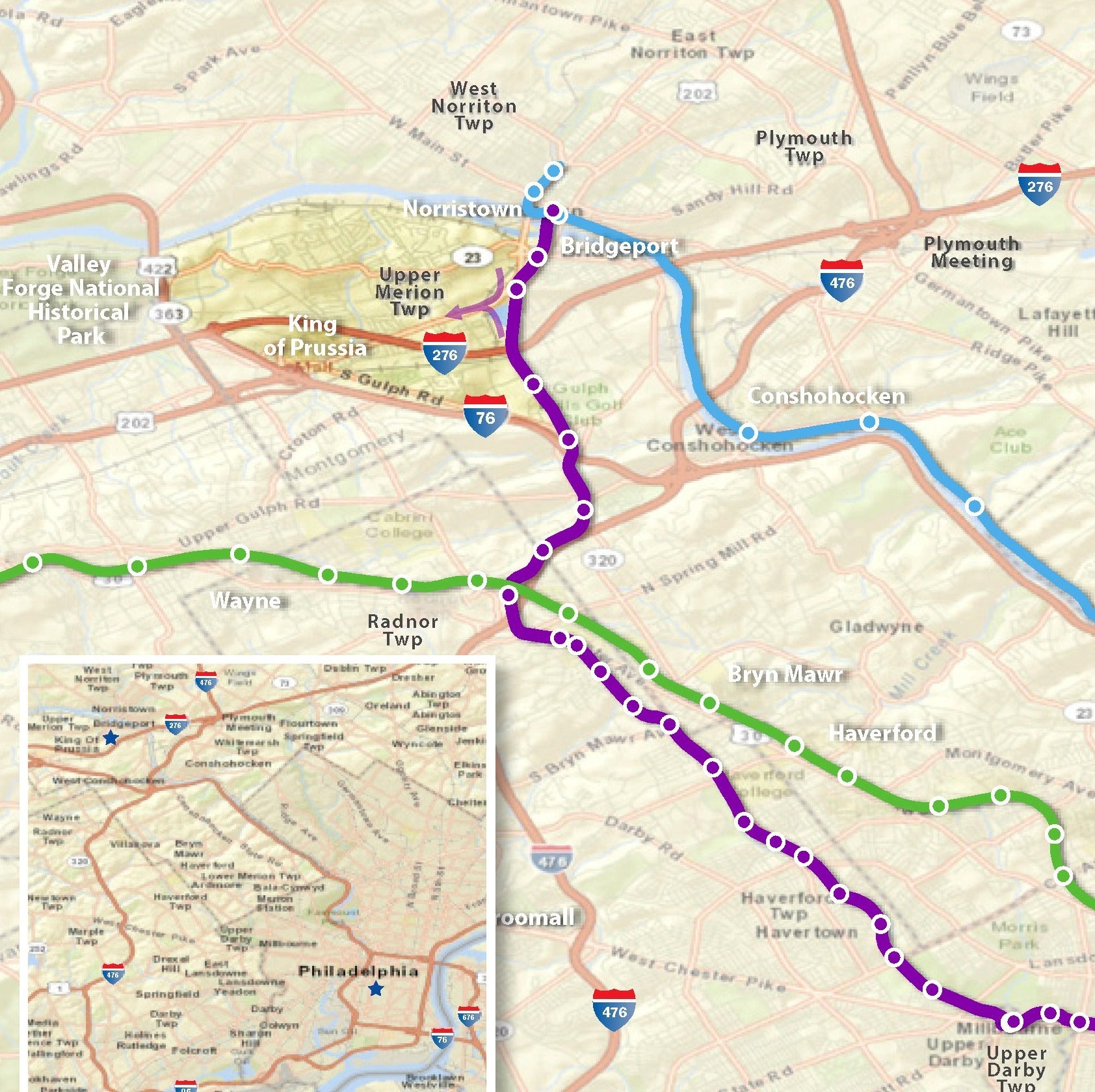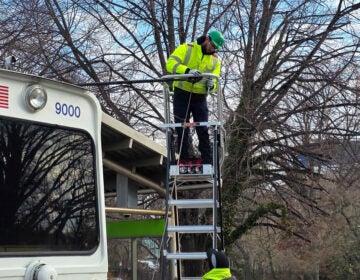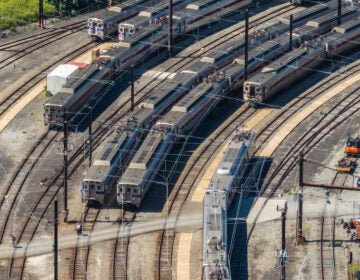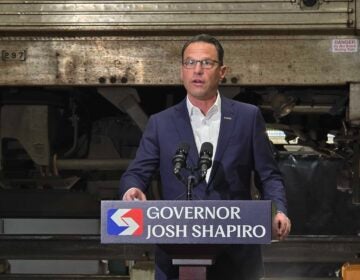SEPTA considers at-grade, elevated King of Prussia rail
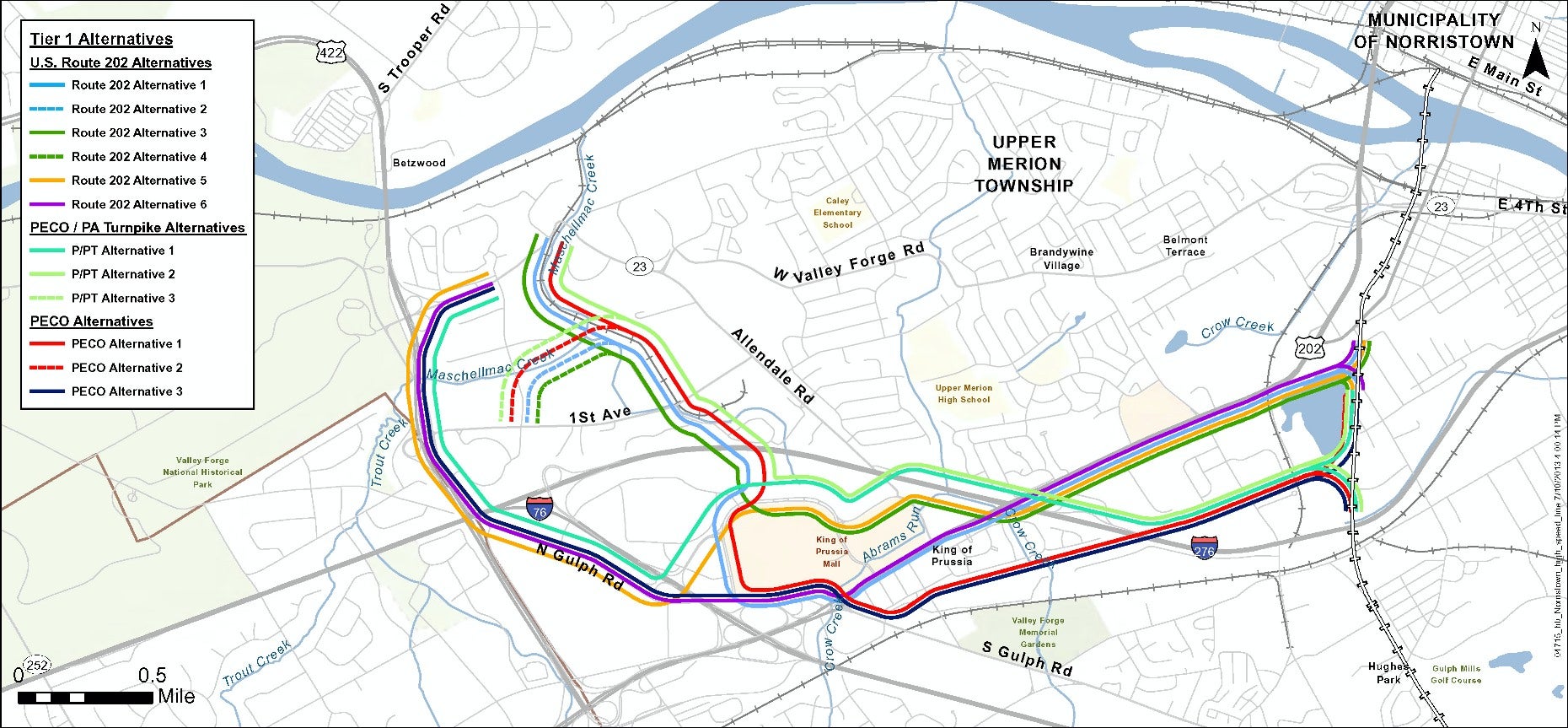
Correction: While SEPTA is considering three main “trunk” routes to the King of Prussia Mall, when the various branch alignments are accounted for, SEPTA is still considering a total of 12 potential routes.
Seventeen miles of thick traffic, buses, tow trucks and 18-wheelers stood between anyone who wanted to get from Philadelphia to King of Prussia for SEPTA’s King of Prussia Rail meeting last night. But as SEPTA told attendees, some time in the distant future, that trip may be possible by rail.
SEPTA is in the midst of planning a rail extension that will branch off from the Norristown High Speed Line and travel to the King of Prussia Mall and nearby attractions. In July, SEPTA held a formal public scoping meeting to solicit feedback on 12 route alternatives that project leaders had identified at that time. At Thursday’s meeting, SEPTA discussed the public feedback and shared the three routes that have been selected from the original 12.
The project is “really all about serving customers in a better way than they currently have as an option,” said Byron Comati, SEPTA’s director of strategic planning and analysis.
The rail extension is expected to catch some ridership from the 25 million people who visit the King of Prussia Mall each year, 57,100 people who work in Upper Merion Township and 1.5 million annual Valley Forge National Historic Park visitors. Already SEPTA serves an average 4,000 weekday bus riders traveling to and from King of Prussia.
Three potential routes
Since July, SEPTA planners have identified their top three King of Prussia Rail route options. Each breaks off from the Norristown High Speed Line and travels to the mall. From there the rail extension will take one of several potential paths that connect to area attractions.
“It looks like a long laundry list of options,” Comati said. “Realistically, it’s actually three.”
In one alternative, the King of Prussia rail, also referred to the Norristown High Speed Line extension, would run along Route 202 – taking advantage of the corridor that the roadway provides.
“Corridors are beautiful things when you’re trying to thread a needle of a line through an area that’s already built up,” Comati said.
Another option is to use a PECO-owned corridor that currently carries overhead transmission wires and would deliver the rail extension to the front of the mall. The third route would use a portion of this PECO right-of-way and then turn to follow the Pennsylvania Turnpike. This option would bring the rail extension to the backside of the mall.
High level versus at-grade
SEPTA is still considering whether to build the rail extension at grade or create an elevated line. After its July public scoping meeting, SEPTA received comments expressing concern that an elevated line would be an unattractive, unappealing eyesore.
“We heard you in the sense that the viaduct may not be appealing,” Comati said. “… Maybe there are segments that can be looked at not as viaduct, not as aerial but at-grade.”
To narrow down the number of proposed routes, project engineers evaluated which routes could utilize more at-grade segments and fewer elevated segments. The three routes detailed above have the potential to maximize at-grade use if that is indeed determined as the best option.
While an at-grade path might not look as visually unappealing, the rails and stations could potentially cut into existing roadways. The rail cars would be physically separated from vehicles on the road, but an at-grade option would likely reduce vehicle travel lanes. There would also have to be crossing gates at every intersection.
At Thursday’s meeting, an attendee asked how an at-grade system would fit into the Route 202 option. SEPTA explained that the rail extension would likely run down the middle of Route 202 and reduce the roadway by a minimum of one lane in each direction.
When another attendee said narrowing Route 202 would be impossible because of heavy vehicle traffic, Comati said, “It’s a great point. I can’t even give you a response. I agree with you.”
Power is another factor.
“As we look at at-grade, we’re also looking at a very different type of power supply,” Comati said.
The current Norristown High Speed Line is powered by a third rail. If the extension is built as an elevated line, it will also be powered by a third rail. If the extension is built at-grade, however, it will be powered by overhead wires to maximize safety. The overhead wires would be supported by poles placed every 150-feet or so.
An at-grade rail extension would still have high level platforms (elevated about three feet and made accessible with ramps) and would still offer the benefits of a high speed line – such as frequency as high as one train every five to seven minutes during peak hours. The at-grade option would also save on capital costs.
Is it worth it?
After the public meeting in July, SEPTA received comments asking if the extension project is worth it, especially given SEPTA’s capital needs. While SEPTA’s situation has changed since July due to the passage of Act 89, which allocates $2.3 billion to state transportation projects over the next five years, one thing that has not changed is the fact that the funds paying for this King of Prussia Rail planning process are separate from SEPTA’s other funds.
As Comati explained it, SEPTA has the advantage of a federal earmark that was originally garnered for the now defunct Schuylkill Valley Metro planning process.
If SEPTA does not take advantage of the earmark, “That money is basically going to expire or be given to someone else in the country for planning exercise,” Comati said.
The earmark does not cover construction costs, but for that, SEPTA plans to apply for federal New Starts funding. That funding request will not conflict with any potential state of good repair funding requests because those requests draw from a “different pot of money,” Comati said.
Next steps
The Delaware Valley Regional Planning Commission is working to develop ridership projections for each of the potential routes. This information will help SEPTA as it evaluates which of the route options is best.
SEPTA is in the midst of a two-year draft environmental impact statement (EIS), which includes a project development request that must be made to the Federal Transit Authority, which, Comati said, will serve as a partner in many ways.
Once the draft EIS is complete, the final EIS will take another year. Engineering will likely take three years, and construction will take another three to four years. In total, that puts the project eight to 10 years down the road.
Additional public comments may be sent to info@kingofprussiarail.com.
WHYY is your source for fact-based, in-depth journalism and information. As a nonprofit organization, we rely on financial support from readers like you. Please give today.



